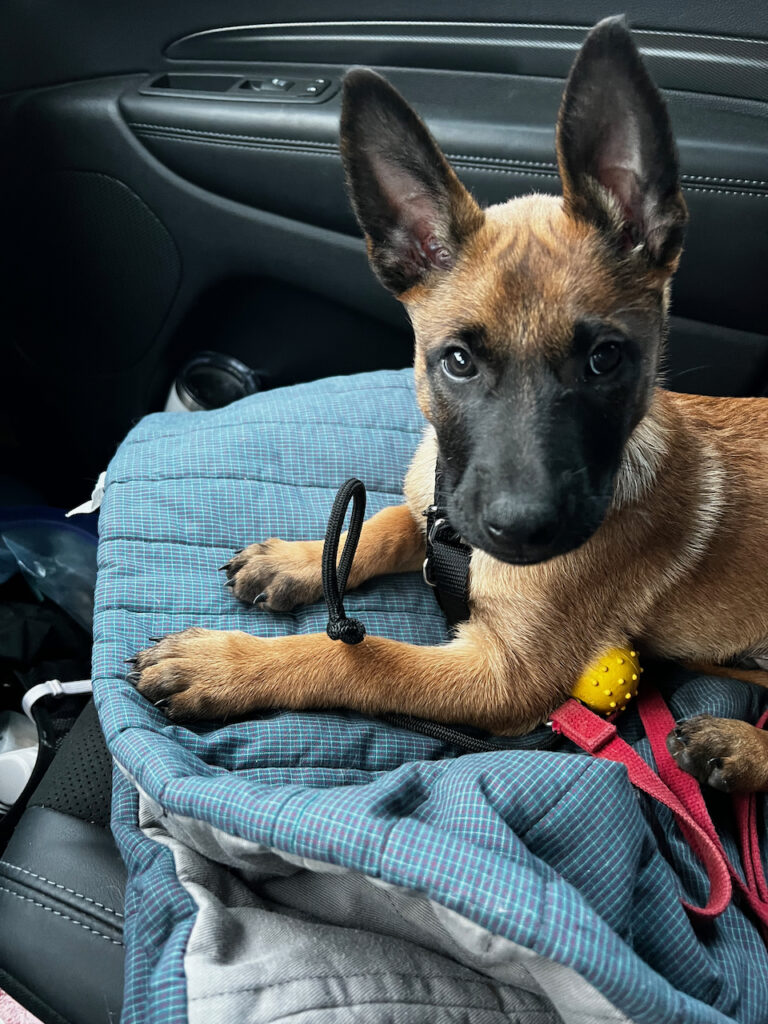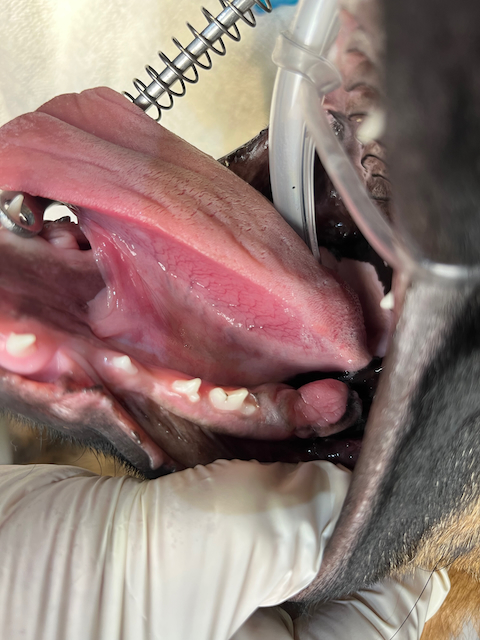There are many reasons to include teaching your pup to tolerate handling in your early puppy training lessons.
Dogs that allow the feet, mouth, and ears to be manipulated are easier to groom and examine. Having worked as a vet tech years ago, I can attest to how appreciative the vet and the staff are if they do not have to wrestle a dog for a routine examination.
Of course, not only is it easier on the staff, it is considerably less stressful for the dog as well. Most dogs will be in a state of heightened alert when they enter a veterinary hospital.
In some cases, it is so anxiety-producing that the dog may need to be medicated just to undergo a routine exam. And why give a dog pharmaceuticals if training can solve the problem?
But there is another reason that is equally, if not more, important for including this skill in your puppy training.
Routinely handling your dog to look them over, nose to tail, keeps you aware of any changes that might be occurring. Early awareness gives you an opportunity for early intervention if something needs to be addressed.
This fact was driven home to me with the recent addition of a new puppy.
I work hard at teaching my dogs to tolerate exams and physical manipulation. I practice daily from the time I bring them home. So it was high on my to-do list when a new member joined the household.
Meet Gimli, my new Malinois pup. 🥰

The day after I got Gimli home, I noticed his breath was foul-smelling. It wasn’t the normal puppy breath. So, I tried to peek inside his mouth. He wasn’t keen on that!
I needed to practice having him tolerate me holding his muzzle and opening his mouth.
In the early sessions, I couldn’t get a clear look as he wiggled and fought the attempts to hold him still. It appeared there might be a wound or something behind the last molar on the lower, left jaw.
To be honest, I didn’t think much of it. I figured he bit into something and assumed it would heal. My plan was just to keep an eye on it.
After a week of practice, I got several seconds of calm compliance and could clearly see there was a growth behind the last molar on the left lower jaw.

Not something I expected to see in a 9-week-old puppy. 😳
Our Vet suggested we keep an eye on the growth for a few weeks to see if it was a foreign object that would work its way out. When that didn’t happen it was time for a biopsy and radiographs. It turned out to be a benign growth, a Fibromatous Epulis. I was very happy to hear it was benign, but it needed to be removed before it grew to a size that would not invade the bone.
Fast-forward to his second surgery at 17 weeks old because the growth had come back. The vet needed to debulk it, hoping that would be the end of it. Over the weeks between the first and second surgeries, I had been routinely opening his mouth and checking to see how things looked, which is why I discovered it was growing again.
It was a roller-coaster of emotions over those couple of months, but I’m happy to report that the second surgery seems to have taken care of it. We are months down the road with no regrowth in sight!
No one expects this sort of thing right after picking up their new pup. But things don’t always go as planned. So, while I wish my boy would not have had these surgeries, it reinforced that it pays off to practice what I preach. And I do preach about the critical importance of teaching handling skills to a puppy from the time they come into your home. If I had not been teaching my puppy to tolerate having his body touched all over, including having his mouth opened, this growth would have gone unnoticed and the prognosis may not have turned out so well.
My Vet actually complimented me several times for catching this so early. He said, “Only you, Robin, would notice this at such a young age!” While I’m certainly proud of those words, I don’t want that to be the case. I want every new puppy owner to understand how important these skills are. Not only could they potentially save a dog’s life due to the early awareness, but they make life so much easier when a puppy grows into a dog that tolerates grooming, nail trims, opening their mouth to take a pill or remove a non-edible item that they pick up.
I encourage every pet owner to raise their dogs to tolerate being looked over head-to-toe and develop a habit of doing that check-over weekly. That way, you have a chance to discover changes or abnormalities while there is time to really make a difference. The skills are actually EASY to teach.
Puppy Preschool: Get a jump start on training BEFORE you need it!
This puppy training course has an entire module devoted to handling exercises. Learn how to develop a compliant and willing attitude so there will be no fear or fussing during routine care, grooming, or veterinary exams.
Plus, TONS of information on all the typical puppy-raising things like; how to socialize, acclimate to a crate and housebreak, the best toys to have and games to play and ones to avoid! This course is a life saver!
Raising a spunky, somewhat “wild” puppy into a fun-loving well-behaved pet is what we all want to do. So be sure you get the right guidance and advice to jump-start the process as soon as you bring that adorable bundle of fur home!

I am so blessed to have found Robin and so are my dogs!! She has instilled in me such a sense of confidence that I was able to just take off and train my English Setter the agility course. Robin has been a continual trusted source of information for us. I was and am determined to have at least one well behaved dog before I die. Robin has provided me with those skills. I just feel guilty for the many dogs I had before I met Robin. “When you know better you do better!!” Thank you Robin!!
Thank you Diane. It has been a pleasure to work with you. It is a magical thing when we develop this kind of relationship with our dog! 🙂